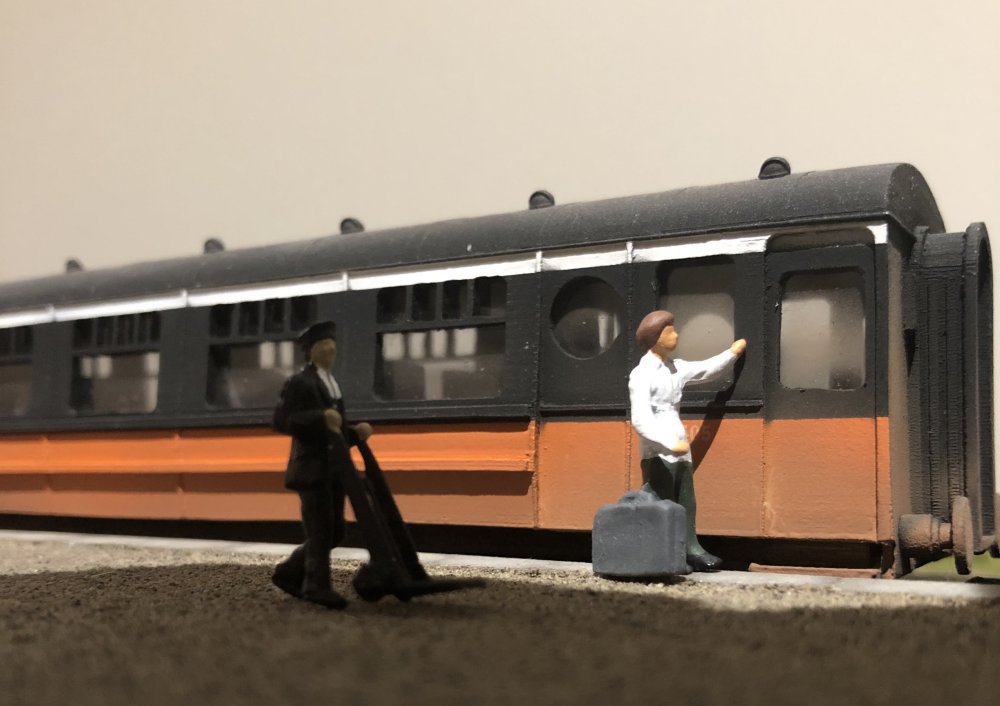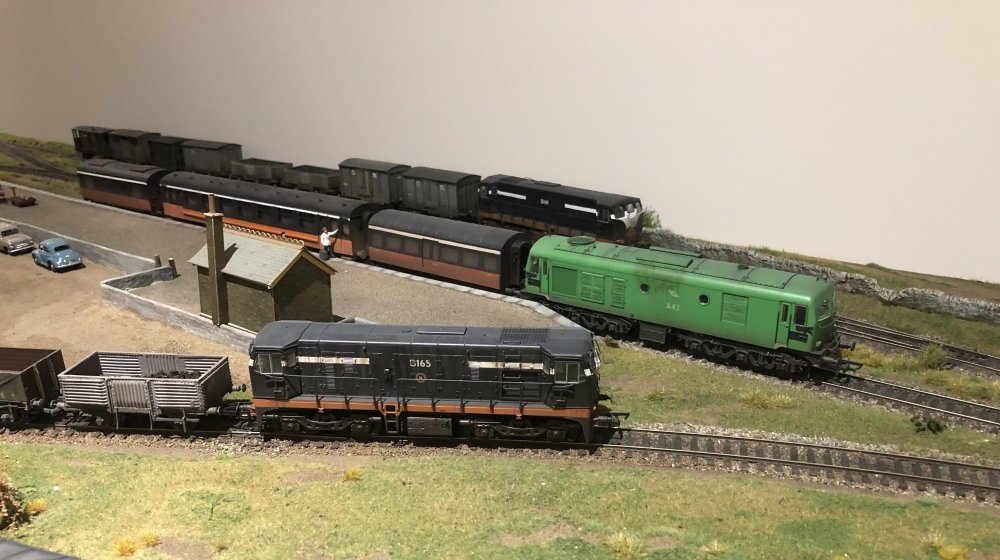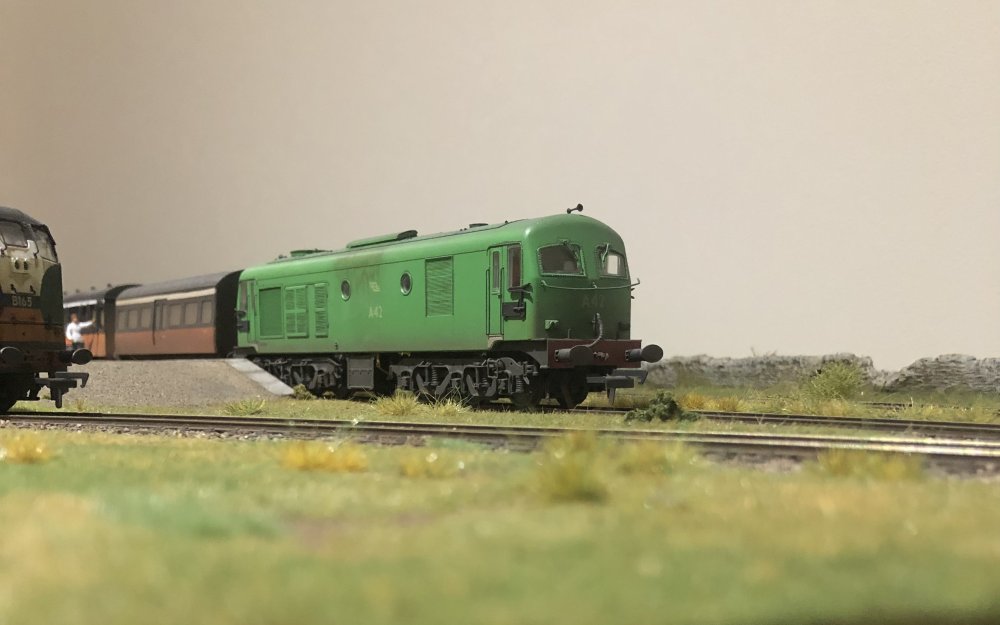-
Posts
15,873 -
Joined
-
Last visited
-
Days Won
393
Content Type
Profiles
Forums
Events
Gallery
Everything posted by jhb171achill
-
mgwr preserved railway Connemara Railway project.
jhb171achill replied to ttc0169's topic in What's happening on the network?
Is Peacocke’s open again? -
mgwr preserved railway Connemara Railway project.
jhb171achill replied to ttc0169's topic in What's happening on the network?
GSWR 837 of 1902, sister of the DCDR's restored 836. Previously prvately purchased by a now-deceased RPSI member and, i understand, given to the RPSI in his will. The other coach in there, 813 (GSWR 1910), had been privately owned too by a group of about half a dozen RPSI members (it was never actually owned by the RPSI), but as these folks were the regular Mullingar work squad 30/40 years ago, 813 ended up based in Mullingar shed as a tarry / restroom for volunteer workers there. The group of owners recently agreed to let the vehicle go to Maam Cross on condition that it be kept under cover and looked after. It appears to be inside the shed there now. -
Fantastic shot! Shows so much interesting details, e.g. BCDR signals.
-
Was about to say.....IRM do these sort of things now and again, and Mark's Models have a fgood range of Oxford stuff at reasonable prices too.
-
-
Canarian Container Anorak
jhb171achill replied to DJ Dangerous's topic in Photos & Videos of the Prototype
€76 million would seem a reasonable sum, then..... -
I love the fact that the station there was acually a much older "re-purposed" house - not a common thing on railways anywhere, not just in Ireland. Soller in Majorca is the only other one such that springs to mind.
-
Yes, it's no longer safe.
-
Yes, Taras are a matter of absolute pot luck. I did a "watch" on them for two months last year for a friend who is accumulating information on them for an eventual IRRS article, and there was barely a day they went according to anything remotely close to the timed paths. On at least one occasion i heard one at exactly the right time, and rushed to the window to see, only to discover that it was pure coincidence - in fact, what i heard was one going the opposite way, itself two hours out of path. Regarding timber and containers in and out of Ballina and Westport, with many passenger trains to cross on single lines, I guess that these go very much more to timetable. Someone with a current WTT (not me) would be able to elaborate. Kildare is a good place to spot these.
-
I’m contacting Santa and the Tooth Fairy. Well, I DID get an extraction the other day. Think I must be owed a good bit for it.
-
In theory, all of the following could authentically wear GSR livery: 1. The MGWR six wheeler at Clifden. 2. The one at Whitehead. 3. The two MGWR ones at Downpatrick. 4. RPSI heritage coaches 1142 and 1337. 5. IE’s 351. 6. DCDR’s 1287, 836 and 1097. 7. The two liberated from Mullingar this week. There’s a dozen vehicles! Oh yes, DCDR’s No. 69 (6 wheeler) also.
-
It’ll need a complete rebuild first, but yes - GSR livery appropriate!
-
813, from memory, is about 1908/10. I’ll check when I get home.
-
813 (the green one) is going to Maam Cross, and 837 (the brown one) to Whitehead for preservation.
-
Any of these overlays left, I wonder?
-
MGWR Passenger and Goods Stock - is there a need?
jhb171achill replied to 2996 Victor's topic in Irish Models
I can’t answer that as I have zero knowledge of the process, but it seems like a simple issue to solve. -
Brookhall Mill - A GNR(I) Micro Layout
jhb171achill replied to Patrick Davey's topic in Irish Model Layouts
Excellent - the weathering really sets it off perfectly. -
-
Unusual congestion at Dugort Harbour on this day in 1964. The branch passenger train today has Crossley A42, still in green, while two 141s potter about - one on the goods and the other stabling here due to congestion up the line at Castletown West with summer “Mystery Trains” choking up the station. Aren’t those “A”s sublime….. That oul handrail on the front has popped out again. Any good clues for fixing them without huge dollops of glue?
-
A comparison between the 800 class and 201 diesels tends to remind me somehow of silk purses and cow's ears...........
-
This has persuaded me to take several photos of trains in Malahide from now on every time I am in the station.
-
You'd be surprised! They had these engines on a number of military-related trains. I was told a story of two of them (dunno what numbers) allocated to Belfast to Aldergrove trains of sand and supplies for the American air base there........
-
These clowns have absolutely ZERO right to eject someone from a public railway platform solely for taking photos. While the UK is a different country with a different legal system, their railway laws are based on the same original legislation as ours, and this has been tested in court there on a number of occasions. One extremely highly respected and well kinown railway photographer was threatened by a member of railway staff at a location on the Kildare suburban route and threatened with the gardai. Her told the member of staff that he would go of his own accord when he was finished, and suggested they call the gardai if they want. The railway staff member retreated, with bad grace. By law, there is no restriction on taking photographgs of trains in Ireland (south OR north), either on non-railway premises (e.g. over a wall) or ON railway premises, such as a platform; provided: 1. You are not obstructing the public or staff in any way, by the use of your equipment or your personal presence. 2. You remain at all times on the platform or footbridges in areas where the public are permitted (e.g. not up signal cabin steps, or off platform ramps). 3. You do not interfere with, or in any way obstruct, railway staff going about their business.# 4. You do not violate the personal privacy of the general public by including thewm within your images (within reason; a distant image of a tiny figure with their back to you wouldn't be held up in court as being a problem, or else all public photography would have to be banned). .....and so on. I have taken pics at Malahide station myself - and posted them (publicly) online. If I am ever confronted with a person wearing any uniform - be they security companies, railway staff, or whatever, I will make a note of, or ask them, for their name or ID number and make a complaint accordingly; I would suggest that anyone else does the same. Firstly, though, I would politely tell them that there are no laws of any sort preventing you taking photographs of trains subject to the above. As for the Taras, yes, the above times are when they are SUPPOSED to operate; but they rarely stick to the paths allocated. At one stage, I monitored their times for several months for the benefit of an IRRS member who intends in due course to write an article about them for the journal. I can do this, as I can see the line from outside my study window; a 29 class railcar has just passed me by a few minutes ago. I know of several potential photographers who have stood about Malahide, Donabate, Skerries and Drogheda stations for ages hoping to see one, but having no luck. The scheduled three return trips per day don't always run either - occasionally just two.
-
Wow! Interesting…… Probably a cheaper option than building an actual building of the same floor area….
.png.c363cdf5c3fb7955cd92a55eb6dbbae0.png)







